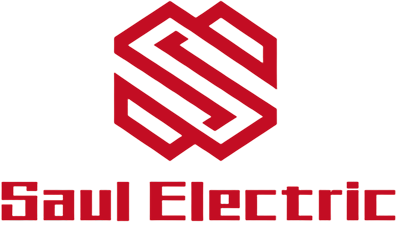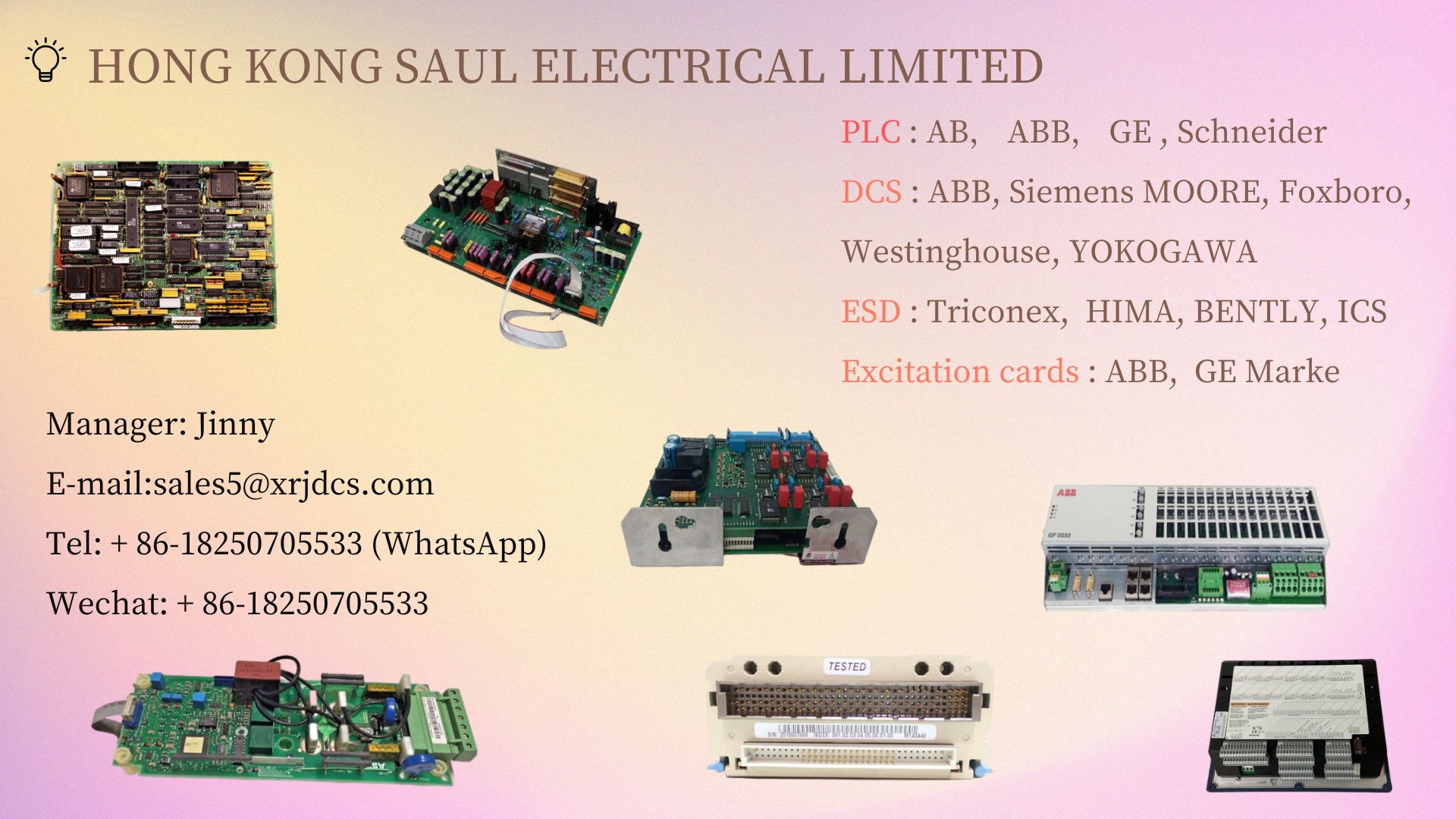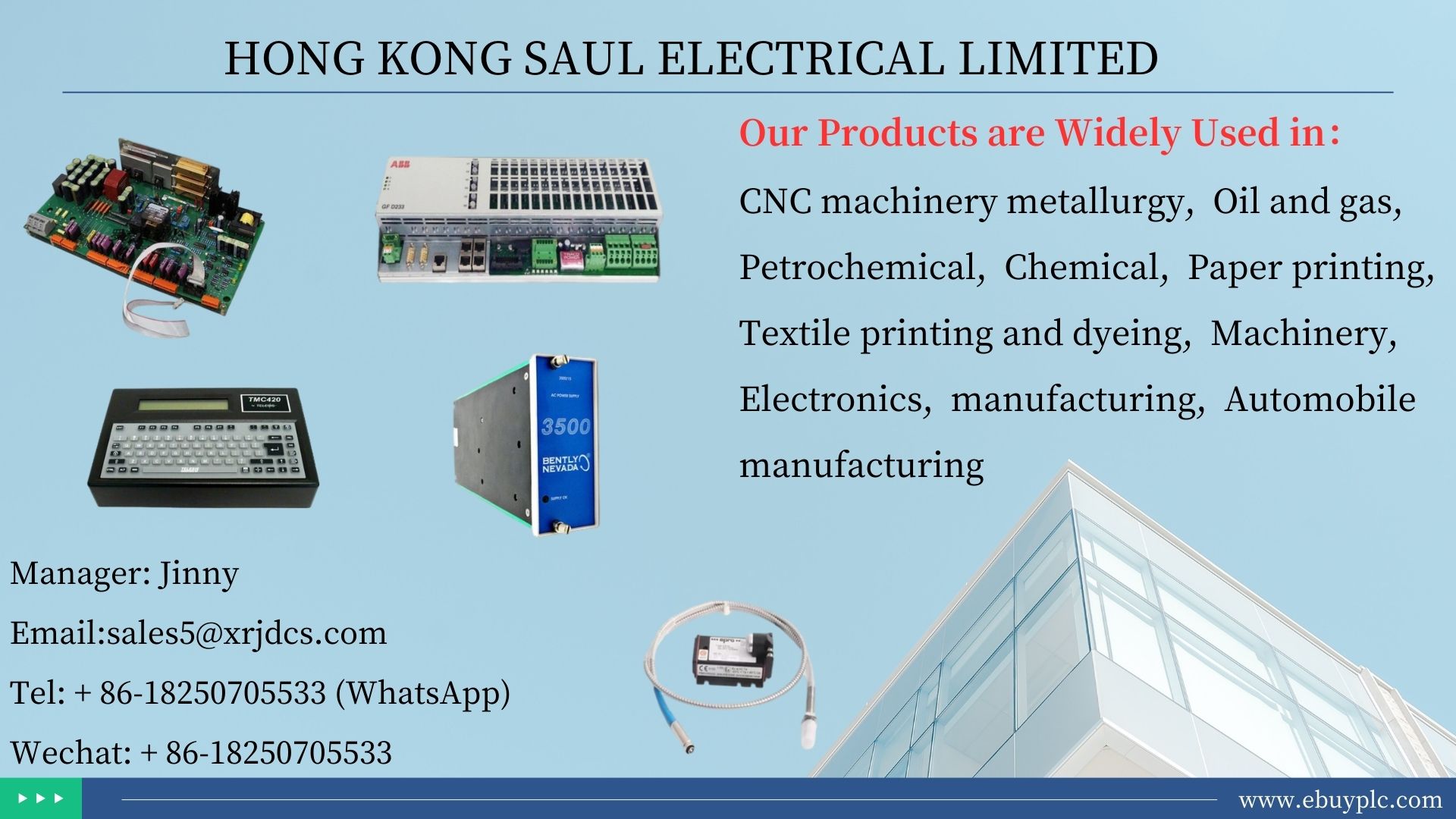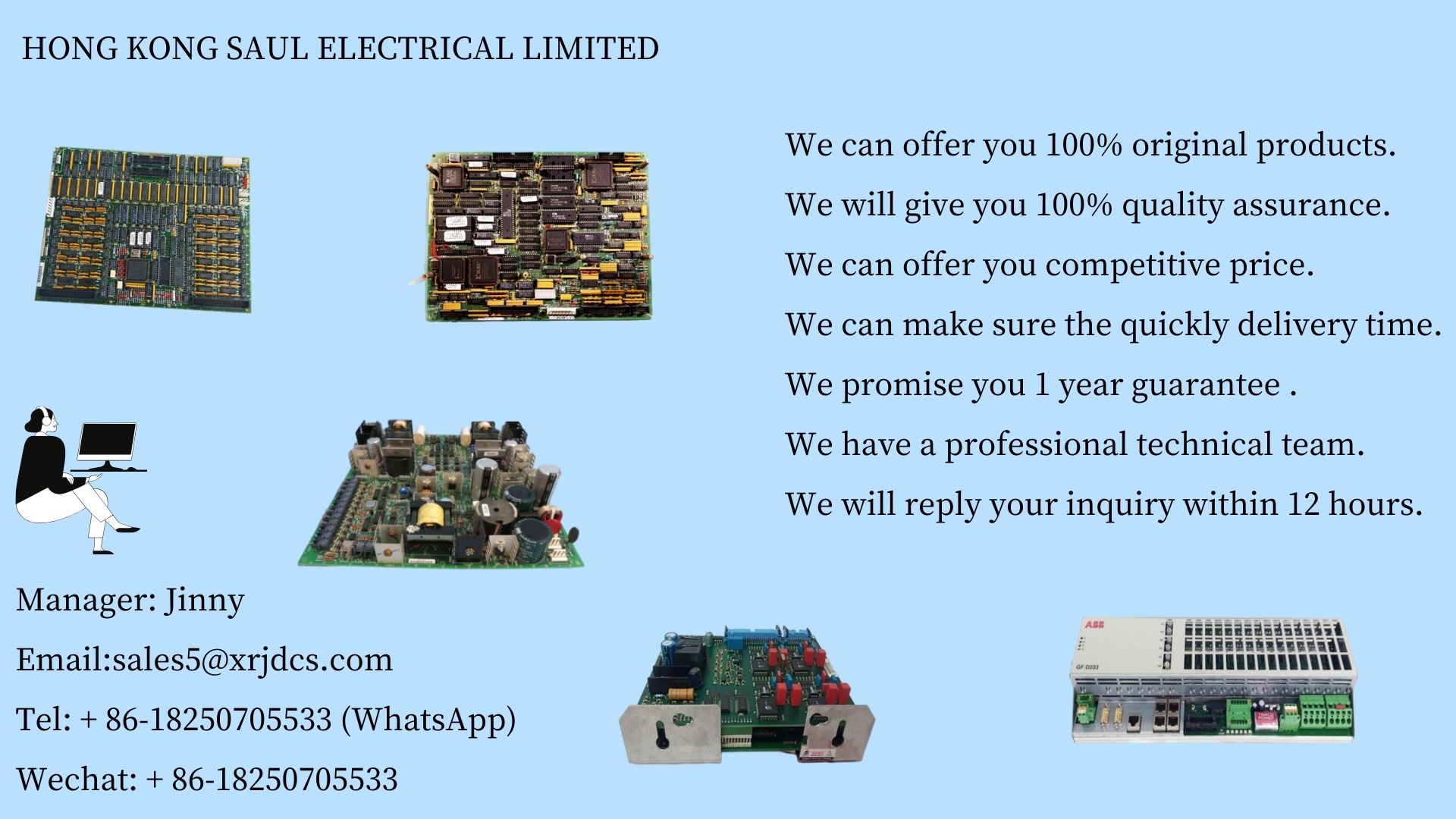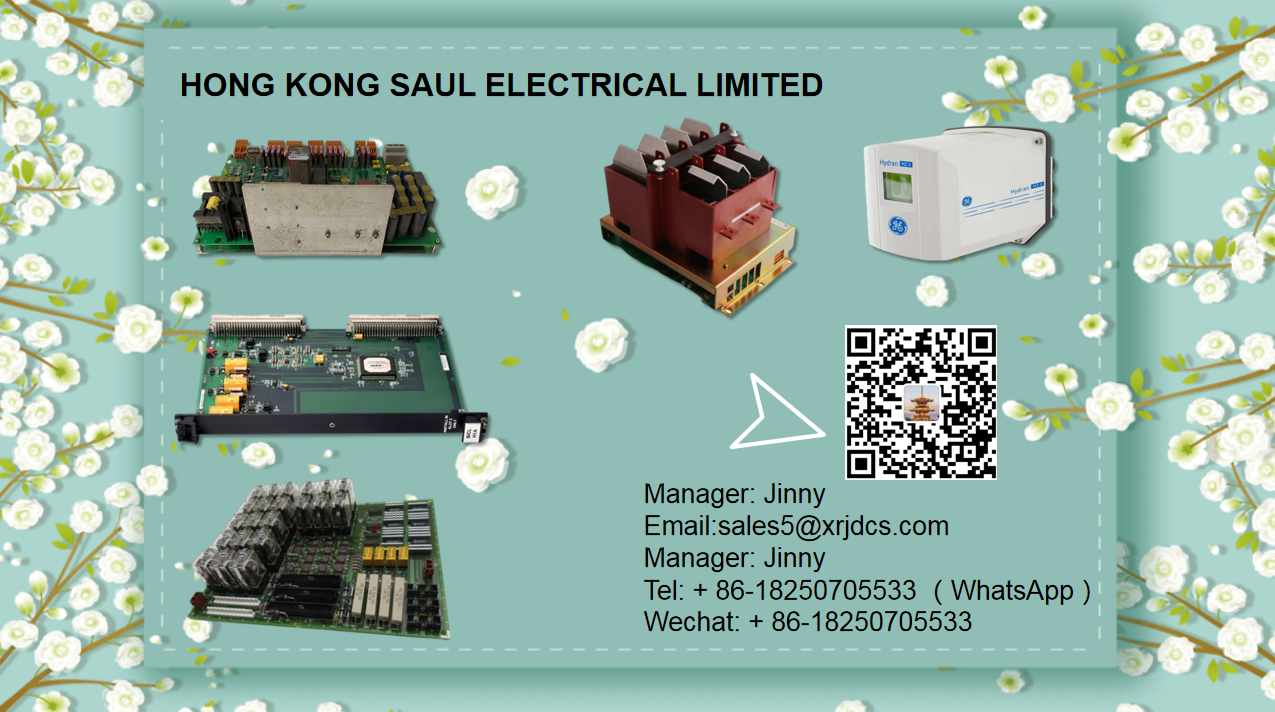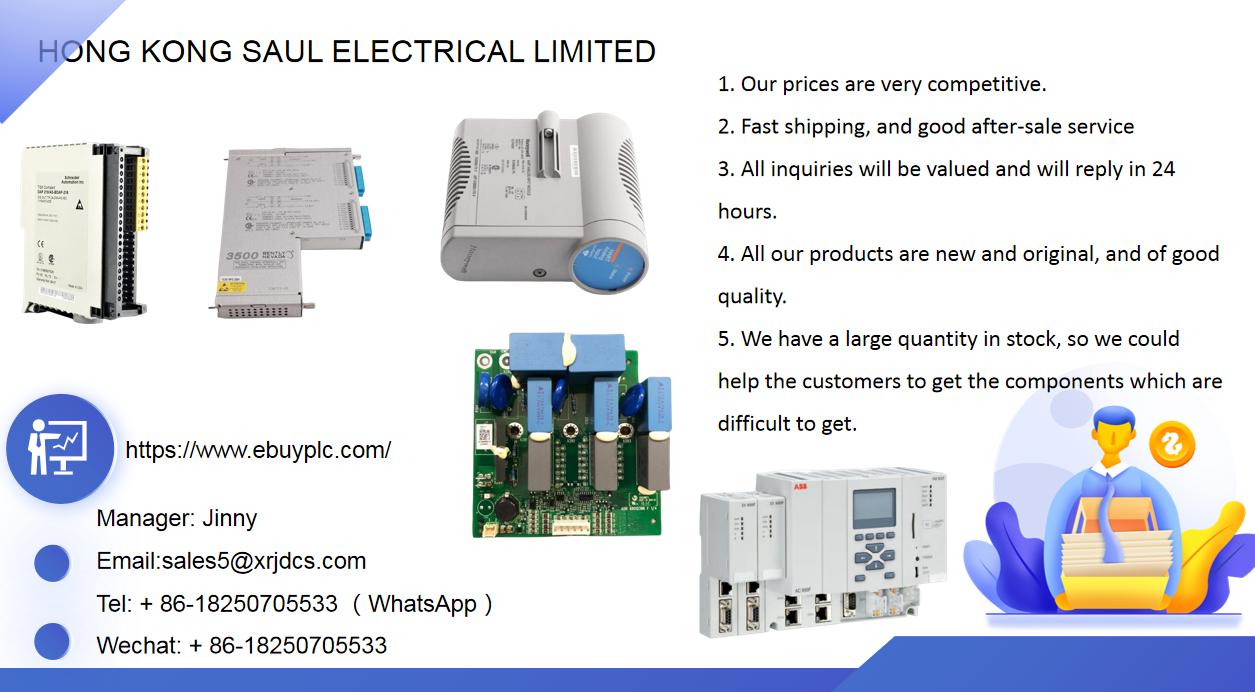0102030405
Predictive maintenance should be fully implemented and should not be carried out too quickly
2023-12-08
In recent years, the concept of "predictive maintenance" has been frequently mentioned. In the era of industrial Internet, industrial manufacturing equipment has become more efficient and intelligent, but it has brought great challenges to the maintenance of the equipment itself. The consequences of poor maintenance are not only affecting the production efficiency of the factory, but also causing huge losses.
The post failure maintenance or regular maintenance in the traditional maintenance mode will affect the production efficiency and product quality, and greatly increase the manufacturer's cost. With the mature application of Internet of things, big data, cloud computing, artificial intelligence and sensing technology, predictive maintenance technology, a "killer" application, came into being.
According to the prediction of relevant institutions, by 2024, the annual compound growth rate of the global predictive maintenance market will exceed 39%, reaching US $23.5 billion. It can be seen that in the next few years, the development prospect of predictive maintenance market is very considerable.
Benefits of predictive maintenance
At present, the maintenance of industrial equipment can be roughly divided into three categories: restorative maintenance, preventive maintenance and predictive maintenance. The difference is that restorative maintenance is post repair, preventive maintenance is more about judging faults by experience, and predictive maintenance can carry out regular or continuous condition monitoring and fault diagnosis for some important parts while the machine is running.
 Predictive maintenance combines multi-source data, such as key equipment sensors, enterprise resource planning (ERP), computerized maintenance management system (CMMS) and production data. The intelligent plant management system combines this data with advanced prediction models and analysis tools to predict faults and actively solve them. Predictive maintenance has the following advantages:
● little impact on the production line: unlike intelligent manufacturing, the production line itself needs to be transformed and upgraded. The hardware equipment for predictive maintenance is mainly to help establish the connection between the equipment and the server. There is no need to change the production line or production process, which has little impact on the overall production schedule.
● high reproducibility: the solution can be quickly copied on the same device, and the more imported devices, the more available data will be generated, which is more helpful to improve the accuracy of the model.
● significant substantive results: predictive maintenance can help reduce costs and increase efficiency of operation and maintenance services. According to the survey, predictive maintenance can reduce MrOS (maintenance, repair and operation) costs by 5-10% and overall maintenance costs by 5-10%; In terms of efficiency improvement, predictive maintenance can improve the normal operation time of equipment by 10-20%, reduce the equipment maintenance time by 20-50%, and provide better guarantee for product quality.
● wide application scenarios: the main principle of predictive maintenance is based on equipment networking, data acquisition, big data analysis and machine learning. It has great development potential in the future, and gradually promotes the extension of use scenarios from equipment maintenance to scheduling, asset management, etc.
Predictive maintenance market players
In the process of predictive maintenance, data is the key. How to obtain and collect data is essential for sensors. Finally, it is necessary to sort out and analyze the collected data and turn it into real valuable content, so it must be visualized, evaluated and processed.
Based on this, predictive maintenance also brings opportunities to subdivided professional players in the fields of data acquisition, analysis and evaluation, including basic and key hardware suppliers. On the one hand, enterprises of condition monitoring type (companies that provide sensors and condition monitoring solutions for measuring mechanical parameters, such as vibration or temperature); On the other hand, it is an enterprise of industrial control system type (PLC / DCS system for process processing and machine related data processing).
In recent years, many well-known enterprises have already incorporated predictive maintenance into the company's strategic track. At present, there are many excellent platforms in the market for data collection and analysis. For example, Ge, Siemens, abb, Phoenix Electric, Schneider Electric, Honeywell, etc.
Predix of Ge: predix is a cloud service platform developed by GE for industrial data and analysis. It is responsible for connecting various industrial assets, equipment and suppliers to the cloud, providing complete equipment health and fault prediction for various industrial equipment, so as to realize production efficiency optimization, energy consumption management, scheduling optimization, etc. Predix adopts a combination of data-driven and mechanism to solve problems such as quality, efficiency and energy consumption, and help industrial enterprises realize digital transformation.
Predictive maintenance combines multi-source data, such as key equipment sensors, enterprise resource planning (ERP), computerized maintenance management system (CMMS) and production data. The intelligent plant management system combines this data with advanced prediction models and analysis tools to predict faults and actively solve them. Predictive maintenance has the following advantages:
● little impact on the production line: unlike intelligent manufacturing, the production line itself needs to be transformed and upgraded. The hardware equipment for predictive maintenance is mainly to help establish the connection between the equipment and the server. There is no need to change the production line or production process, which has little impact on the overall production schedule.
● high reproducibility: the solution can be quickly copied on the same device, and the more imported devices, the more available data will be generated, which is more helpful to improve the accuracy of the model.
● significant substantive results: predictive maintenance can help reduce costs and increase efficiency of operation and maintenance services. According to the survey, predictive maintenance can reduce MrOS (maintenance, repair and operation) costs by 5-10% and overall maintenance costs by 5-10%; In terms of efficiency improvement, predictive maintenance can improve the normal operation time of equipment by 10-20%, reduce the equipment maintenance time by 20-50%, and provide better guarantee for product quality.
● wide application scenarios: the main principle of predictive maintenance is based on equipment networking, data acquisition, big data analysis and machine learning. It has great development potential in the future, and gradually promotes the extension of use scenarios from equipment maintenance to scheduling, asset management, etc.
Predictive maintenance market players
In the process of predictive maintenance, data is the key. How to obtain and collect data is essential for sensors. Finally, it is necessary to sort out and analyze the collected data and turn it into real valuable content, so it must be visualized, evaluated and processed.
Based on this, predictive maintenance also brings opportunities to subdivided professional players in the fields of data acquisition, analysis and evaluation, including basic and key hardware suppliers. On the one hand, enterprises of condition monitoring type (companies that provide sensors and condition monitoring solutions for measuring mechanical parameters, such as vibration or temperature); On the other hand, it is an enterprise of industrial control system type (PLC / DCS system for process processing and machine related data processing).
In recent years, many well-known enterprises have already incorporated predictive maintenance into the company's strategic track. At present, there are many excellent platforms in the market for data collection and analysis. For example, Ge, Siemens, abb, Phoenix Electric, Schneider Electric, Honeywell, etc.
Predix of Ge: predix is a cloud service platform developed by GE for industrial data and analysis. It is responsible for connecting various industrial assets, equipment and suppliers to the cloud, providing complete equipment health and fault prediction for various industrial equipment, so as to realize production efficiency optimization, energy consumption management, scheduling optimization, etc. Predix adopts a combination of data-driven and mechanism to solve problems such as quality, efficiency and energy consumption, and help industrial enterprises realize digital transformation.
 Siemens' mindsphere: mindsphere is a cloud based open Internet of things operating system launched by Siemens. It can safely and quickly connect products, factories, systems and machinery and equipment to the digital world, and fully tap the potential value of data generated by equipment and systems in the process of enterprise operation, Transfer it to mindsphere's industrial application with advanced analysis function for analysis, so as to produce better production and operation results.
Siemens' mindsphere: mindsphere is a cloud based open Internet of things operating system launched by Siemens. It can safely and quickly connect products, factories, systems and machinery and equipment to the digital world, and fully tap the potential value of data generated by equipment and systems in the process of enterprise operation, Transfer it to mindsphere's industrial application with advanced analysis function for analysis, so as to produce better production and operation results.
 ABB Ability : ABB Ability It integrates ABB's cross industry and integrated digital capabilities from equipment, edge computing to cloud services. ABB Ability Customized digital solutions have helped many enterprises in the fields of energy, petrochemical, metallurgy, machinery, automobile, ship, data center, infrastructure and so on to realize interconnection with the industrial Internet of things, fully tap the digital potential, improve efficiency, reduce costs, and improve security and core competitiveness.
ABB Ability : ABB Ability It integrates ABB's cross industry and integrated digital capabilities from equipment, edge computing to cloud services. ABB Ability Customized digital solutions have helped many enterprises in the fields of energy, petrochemical, metallurgy, machinery, automobile, ship, data center, infrastructure and so on to realize interconnection with the industrial Internet of things, fully tap the digital potential, improve efficiency, reduce costs, and improve security and core competitiveness.
 Schneider Electric ecostruxure: the main function of ecostruxure platform is to realize the effective management of enterprise energy efficiency, so as to reduce the operation cost of enterprises, including interconnected products, edge control and application, analysis and service. Ecostruxure combines Schneider Electric's experience and expertise in automation and energy efficiency management with data-driven measurement and analysis technology to help customers maximize the value of the Internet of things.
Schneider Electric ecostruxure: the main function of ecostruxure platform is to realize the effective management of enterprise energy efficiency, so as to reduce the operation cost of enterprises, including interconnected products, edge control and application, analysis and service. Ecostruxure combines Schneider Electric's experience and expertise in automation and energy efficiency management with data-driven measurement and analysis technology to help customers maximize the value of the Internet of things.
 In addition to hardware providers and data analysis providers, some connection providers realize wired / wireless connections through communication modules, gateways, M2M and other devices, such as Huawei, and companies supporting cloud storage and Internet of things application platforms, such as PTC, sap and other giants have entered the track through market segments.
Predictive maintenance development is less than expected
Emerging technologies such as cloud computing, edge technology and artificial intelligence are opening the opportunity door to change the market pattern of predictive maintenance. The ultimate purpose of predictive maintenance is to have a positive impact on the company's profits. Although the development prospect of predictive maintenance is promising, the penetration rate of predictive maintenance in many traditional industries in China is still very low, and many enterprises still doubt whether predictive maintenance can really bring tangible benefits.
A survey shows that the main reasons why the later development of predictive maintenance market is less than expected are as follows:
● return on investment is difficult to calculate
For industrial enterprises, if the ROI is not clear, it means that the effect is slow, the effect is difficult to evaluate, and the time for predictive maintenance to really work is longer than expected. Naturally, the promotion willingness of industrial enterprises will not increase.
● it is difficult to change the traditional business thinking mode
For predictive maintenance suppliers, the concept of selling products should be changed from selling products to selling services used by products. If only the downtime risk reduced by predictive maintenance and the economic account of saving money are considered, it is far from enough. A good business model does not necessarily help end users save more money, but helps equipment service providers or equipment manufacturers make more money.
● the foundation is not solid and the amount of data is insufficient
Predictive maintenance of industrial equipment is faced with a common problem that is avoided - the number of sensors of the equipment itself is not enough, many data have not formed an effective long-term accumulation, and often "correct data" is far better than "big data" with quantity and no quality.
From the current development situation, predictive maintenance technology is not yet fully mature, and there is still a certain distance from large-scale landing. For suppliers, what needs to be considered at this stage is how to use predictive maintenance technology to bring practical value to users, that is, cost reduction, efficiency increase, safety, and change the traditional thinking mode.
For the enterprise itself, it should have sufficient self-awareness. If the enterprise itself has not reached the stage or level of digitization and intelligence, and is not enough to support the implementation of predictive maintenance scheme, the enterprise needs to conduct an overall evaluation of its own factory and compare its input cost with the current maintenance cost before making the decision to introduce predictive maintenance.
For enterprises with a certain digital level, what enterprises need is sufficient experience and professional knowledge, rather than blindly introducing high-tech software systems. They should understand what is "correct" and "useful" for enterprise operation and maintenance, what should give priority to digitization, and how to do this effectively.
Predictive maintenance requires enterprises and suppliers to have sufficient industry know-how to fully implement in more industries and maximize benefits and value.
In addition to hardware providers and data analysis providers, some connection providers realize wired / wireless connections through communication modules, gateways, M2M and other devices, such as Huawei, and companies supporting cloud storage and Internet of things application platforms, such as PTC, sap and other giants have entered the track through market segments.
Predictive maintenance development is less than expected
Emerging technologies such as cloud computing, edge technology and artificial intelligence are opening the opportunity door to change the market pattern of predictive maintenance. The ultimate purpose of predictive maintenance is to have a positive impact on the company's profits. Although the development prospect of predictive maintenance is promising, the penetration rate of predictive maintenance in many traditional industries in China is still very low, and many enterprises still doubt whether predictive maintenance can really bring tangible benefits.
A survey shows that the main reasons why the later development of predictive maintenance market is less than expected are as follows:
● return on investment is difficult to calculate
For industrial enterprises, if the ROI is not clear, it means that the effect is slow, the effect is difficult to evaluate, and the time for predictive maintenance to really work is longer than expected. Naturally, the promotion willingness of industrial enterprises will not increase.
● it is difficult to change the traditional business thinking mode
For predictive maintenance suppliers, the concept of selling products should be changed from selling products to selling services used by products. If only the downtime risk reduced by predictive maintenance and the economic account of saving money are considered, it is far from enough. A good business model does not necessarily help end users save more money, but helps equipment service providers or equipment manufacturers make more money.
● the foundation is not solid and the amount of data is insufficient
Predictive maintenance of industrial equipment is faced with a common problem that is avoided - the number of sensors of the equipment itself is not enough, many data have not formed an effective long-term accumulation, and often "correct data" is far better than "big data" with quantity and no quality.
From the current development situation, predictive maintenance technology is not yet fully mature, and there is still a certain distance from large-scale landing. For suppliers, what needs to be considered at this stage is how to use predictive maintenance technology to bring practical value to users, that is, cost reduction, efficiency increase, safety, and change the traditional thinking mode.
For the enterprise itself, it should have sufficient self-awareness. If the enterprise itself has not reached the stage or level of digitization and intelligence, and is not enough to support the implementation of predictive maintenance scheme, the enterprise needs to conduct an overall evaluation of its own factory and compare its input cost with the current maintenance cost before making the decision to introduce predictive maintenance.
For enterprises with a certain digital level, what enterprises need is sufficient experience and professional knowledge, rather than blindly introducing high-tech software systems. They should understand what is "correct" and "useful" for enterprise operation and maintenance, what should give priority to digitization, and how to do this effectively.
Predictive maintenance requires enterprises and suppliers to have sufficient industry know-how to fully implement in more industries and maximize benefits and value.
 Predictive maintenance combines multi-source data, such as key equipment sensors, enterprise resource planning (ERP), computerized maintenance management system (CMMS) and production data. The intelligent plant management system combines this data with advanced prediction models and analysis tools to predict faults and actively solve them. Predictive maintenance has the following advantages:
● little impact on the production line: unlike intelligent manufacturing, the production line itself needs to be transformed and upgraded. The hardware equipment for predictive maintenance is mainly to help establish the connection between the equipment and the server. There is no need to change the production line or production process, which has little impact on the overall production schedule.
● high reproducibility: the solution can be quickly copied on the same device, and the more imported devices, the more available data will be generated, which is more helpful to improve the accuracy of the model.
● significant substantive results: predictive maintenance can help reduce costs and increase efficiency of operation and maintenance services. According to the survey, predictive maintenance can reduce MrOS (maintenance, repair and operation) costs by 5-10% and overall maintenance costs by 5-10%; In terms of efficiency improvement, predictive maintenance can improve the normal operation time of equipment by 10-20%, reduce the equipment maintenance time by 20-50%, and provide better guarantee for product quality.
● wide application scenarios: the main principle of predictive maintenance is based on equipment networking, data acquisition, big data analysis and machine learning. It has great development potential in the future, and gradually promotes the extension of use scenarios from equipment maintenance to scheduling, asset management, etc.
Predictive maintenance market players
In the process of predictive maintenance, data is the key. How to obtain and collect data is essential for sensors. Finally, it is necessary to sort out and analyze the collected data and turn it into real valuable content, so it must be visualized, evaluated and processed.
Based on this, predictive maintenance also brings opportunities to subdivided professional players in the fields of data acquisition, analysis and evaluation, including basic and key hardware suppliers. On the one hand, enterprises of condition monitoring type (companies that provide sensors and condition monitoring solutions for measuring mechanical parameters, such as vibration or temperature); On the other hand, it is an enterprise of industrial control system type (PLC / DCS system for process processing and machine related data processing).
In recent years, many well-known enterprises have already incorporated predictive maintenance into the company's strategic track. At present, there are many excellent platforms in the market for data collection and analysis. For example, Ge, Siemens, abb, Phoenix Electric, Schneider Electric, Honeywell, etc.
Predix of Ge: predix is a cloud service platform developed by GE for industrial data and analysis. It is responsible for connecting various industrial assets, equipment and suppliers to the cloud, providing complete equipment health and fault prediction for various industrial equipment, so as to realize production efficiency optimization, energy consumption management, scheduling optimization, etc. Predix adopts a combination of data-driven and mechanism to solve problems such as quality, efficiency and energy consumption, and help industrial enterprises realize digital transformation.
Predictive maintenance combines multi-source data, such as key equipment sensors, enterprise resource planning (ERP), computerized maintenance management system (CMMS) and production data. The intelligent plant management system combines this data with advanced prediction models and analysis tools to predict faults and actively solve them. Predictive maintenance has the following advantages:
● little impact on the production line: unlike intelligent manufacturing, the production line itself needs to be transformed and upgraded. The hardware equipment for predictive maintenance is mainly to help establish the connection between the equipment and the server. There is no need to change the production line or production process, which has little impact on the overall production schedule.
● high reproducibility: the solution can be quickly copied on the same device, and the more imported devices, the more available data will be generated, which is more helpful to improve the accuracy of the model.
● significant substantive results: predictive maintenance can help reduce costs and increase efficiency of operation and maintenance services. According to the survey, predictive maintenance can reduce MrOS (maintenance, repair and operation) costs by 5-10% and overall maintenance costs by 5-10%; In terms of efficiency improvement, predictive maintenance can improve the normal operation time of equipment by 10-20%, reduce the equipment maintenance time by 20-50%, and provide better guarantee for product quality.
● wide application scenarios: the main principle of predictive maintenance is based on equipment networking, data acquisition, big data analysis and machine learning. It has great development potential in the future, and gradually promotes the extension of use scenarios from equipment maintenance to scheduling, asset management, etc.
Predictive maintenance market players
In the process of predictive maintenance, data is the key. How to obtain and collect data is essential for sensors. Finally, it is necessary to sort out and analyze the collected data and turn it into real valuable content, so it must be visualized, evaluated and processed.
Based on this, predictive maintenance also brings opportunities to subdivided professional players in the fields of data acquisition, analysis and evaluation, including basic and key hardware suppliers. On the one hand, enterprises of condition monitoring type (companies that provide sensors and condition monitoring solutions for measuring mechanical parameters, such as vibration or temperature); On the other hand, it is an enterprise of industrial control system type (PLC / DCS system for process processing and machine related data processing).
In recent years, many well-known enterprises have already incorporated predictive maintenance into the company's strategic track. At present, there are many excellent platforms in the market for data collection and analysis. For example, Ge, Siemens, abb, Phoenix Electric, Schneider Electric, Honeywell, etc.
Predix of Ge: predix is a cloud service platform developed by GE for industrial data and analysis. It is responsible for connecting various industrial assets, equipment and suppliers to the cloud, providing complete equipment health and fault prediction for various industrial equipment, so as to realize production efficiency optimization, energy consumption management, scheduling optimization, etc. Predix adopts a combination of data-driven and mechanism to solve problems such as quality, efficiency and energy consumption, and help industrial enterprises realize digital transformation.
 Siemens' mindsphere: mindsphere is a cloud based open Internet of things operating system launched by Siemens. It can safely and quickly connect products, factories, systems and machinery and equipment to the digital world, and fully tap the potential value of data generated by equipment and systems in the process of enterprise operation, Transfer it to mindsphere's industrial application with advanced analysis function for analysis, so as to produce better production and operation results.
Siemens' mindsphere: mindsphere is a cloud based open Internet of things operating system launched by Siemens. It can safely and quickly connect products, factories, systems and machinery and equipment to the digital world, and fully tap the potential value of data generated by equipment and systems in the process of enterprise operation, Transfer it to mindsphere's industrial application with advanced analysis function for analysis, so as to produce better production and operation results.
 ABB Ability : ABB Ability It integrates ABB's cross industry and integrated digital capabilities from equipment, edge computing to cloud services. ABB Ability Customized digital solutions have helped many enterprises in the fields of energy, petrochemical, metallurgy, machinery, automobile, ship, data center, infrastructure and so on to realize interconnection with the industrial Internet of things, fully tap the digital potential, improve efficiency, reduce costs, and improve security and core competitiveness.
ABB Ability : ABB Ability It integrates ABB's cross industry and integrated digital capabilities from equipment, edge computing to cloud services. ABB Ability Customized digital solutions have helped many enterprises in the fields of energy, petrochemical, metallurgy, machinery, automobile, ship, data center, infrastructure and so on to realize interconnection with the industrial Internet of things, fully tap the digital potential, improve efficiency, reduce costs, and improve security and core competitiveness.
 Schneider Electric ecostruxure: the main function of ecostruxure platform is to realize the effective management of enterprise energy efficiency, so as to reduce the operation cost of enterprises, including interconnected products, edge control and application, analysis and service. Ecostruxure combines Schneider Electric's experience and expertise in automation and energy efficiency management with data-driven measurement and analysis technology to help customers maximize the value of the Internet of things.
Schneider Electric ecostruxure: the main function of ecostruxure platform is to realize the effective management of enterprise energy efficiency, so as to reduce the operation cost of enterprises, including interconnected products, edge control and application, analysis and service. Ecostruxure combines Schneider Electric's experience and expertise in automation and energy efficiency management with data-driven measurement and analysis technology to help customers maximize the value of the Internet of things.
 In addition to hardware providers and data analysis providers, some connection providers realize wired / wireless connections through communication modules, gateways, M2M and other devices, such as Huawei, and companies supporting cloud storage and Internet of things application platforms, such as PTC, sap and other giants have entered the track through market segments.
Predictive maintenance development is less than expected
Emerging technologies such as cloud computing, edge technology and artificial intelligence are opening the opportunity door to change the market pattern of predictive maintenance. The ultimate purpose of predictive maintenance is to have a positive impact on the company's profits. Although the development prospect of predictive maintenance is promising, the penetration rate of predictive maintenance in many traditional industries in China is still very low, and many enterprises still doubt whether predictive maintenance can really bring tangible benefits.
A survey shows that the main reasons why the later development of predictive maintenance market is less than expected are as follows:
● return on investment is difficult to calculate
For industrial enterprises, if the ROI is not clear, it means that the effect is slow, the effect is difficult to evaluate, and the time for predictive maintenance to really work is longer than expected. Naturally, the promotion willingness of industrial enterprises will not increase.
● it is difficult to change the traditional business thinking mode
For predictive maintenance suppliers, the concept of selling products should be changed from selling products to selling services used by products. If only the downtime risk reduced by predictive maintenance and the economic account of saving money are considered, it is far from enough. A good business model does not necessarily help end users save more money, but helps equipment service providers or equipment manufacturers make more money.
● the foundation is not solid and the amount of data is insufficient
Predictive maintenance of industrial equipment is faced with a common problem that is avoided - the number of sensors of the equipment itself is not enough, many data have not formed an effective long-term accumulation, and often "correct data" is far better than "big data" with quantity and no quality.
From the current development situation, predictive maintenance technology is not yet fully mature, and there is still a certain distance from large-scale landing. For suppliers, what needs to be considered at this stage is how to use predictive maintenance technology to bring practical value to users, that is, cost reduction, efficiency increase, safety, and change the traditional thinking mode.
For the enterprise itself, it should have sufficient self-awareness. If the enterprise itself has not reached the stage or level of digitization and intelligence, and is not enough to support the implementation of predictive maintenance scheme, the enterprise needs to conduct an overall evaluation of its own factory and compare its input cost with the current maintenance cost before making the decision to introduce predictive maintenance.
For enterprises with a certain digital level, what enterprises need is sufficient experience and professional knowledge, rather than blindly introducing high-tech software systems. They should understand what is "correct" and "useful" for enterprise operation and maintenance, what should give priority to digitization, and how to do this effectively.
Predictive maintenance requires enterprises and suppliers to have sufficient industry know-how to fully implement in more industries and maximize benefits and value.
In addition to hardware providers and data analysis providers, some connection providers realize wired / wireless connections through communication modules, gateways, M2M and other devices, such as Huawei, and companies supporting cloud storage and Internet of things application platforms, such as PTC, sap and other giants have entered the track through market segments.
Predictive maintenance development is less than expected
Emerging technologies such as cloud computing, edge technology and artificial intelligence are opening the opportunity door to change the market pattern of predictive maintenance. The ultimate purpose of predictive maintenance is to have a positive impact on the company's profits. Although the development prospect of predictive maintenance is promising, the penetration rate of predictive maintenance in many traditional industries in China is still very low, and many enterprises still doubt whether predictive maintenance can really bring tangible benefits.
A survey shows that the main reasons why the later development of predictive maintenance market is less than expected are as follows:
● return on investment is difficult to calculate
For industrial enterprises, if the ROI is not clear, it means that the effect is slow, the effect is difficult to evaluate, and the time for predictive maintenance to really work is longer than expected. Naturally, the promotion willingness of industrial enterprises will not increase.
● it is difficult to change the traditional business thinking mode
For predictive maintenance suppliers, the concept of selling products should be changed from selling products to selling services used by products. If only the downtime risk reduced by predictive maintenance and the economic account of saving money are considered, it is far from enough. A good business model does not necessarily help end users save more money, but helps equipment service providers or equipment manufacturers make more money.
● the foundation is not solid and the amount of data is insufficient
Predictive maintenance of industrial equipment is faced with a common problem that is avoided - the number of sensors of the equipment itself is not enough, many data have not formed an effective long-term accumulation, and often "correct data" is far better than "big data" with quantity and no quality.
From the current development situation, predictive maintenance technology is not yet fully mature, and there is still a certain distance from large-scale landing. For suppliers, what needs to be considered at this stage is how to use predictive maintenance technology to bring practical value to users, that is, cost reduction, efficiency increase, safety, and change the traditional thinking mode.
For the enterprise itself, it should have sufficient self-awareness. If the enterprise itself has not reached the stage or level of digitization and intelligence, and is not enough to support the implementation of predictive maintenance scheme, the enterprise needs to conduct an overall evaluation of its own factory and compare its input cost with the current maintenance cost before making the decision to introduce predictive maintenance.
For enterprises with a certain digital level, what enterprises need is sufficient experience and professional knowledge, rather than blindly introducing high-tech software systems. They should understand what is "correct" and "useful" for enterprise operation and maintenance, what should give priority to digitization, and how to do this effectively.
Predictive maintenance requires enterprises and suppliers to have sufficient industry know-how to fully implement in more industries and maximize benefits and value.